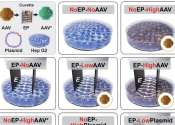An electrifying discovery may help doctors deliver more effective gene therapies
In an effort to improve delivery of costly medical treatments, a team of researchers in electrical engineering at the University of Wisconsin–Madison has developed a stimulating method that could make the human body more ...
Apr 30, 2024
0
12









